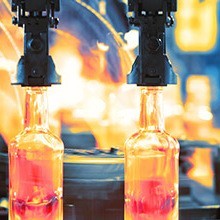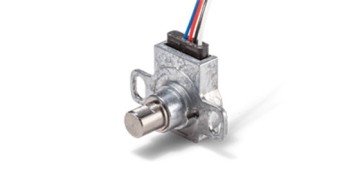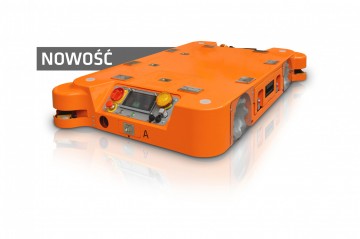
Glass products are used in various industries, ranging from glass in buildings and vehicles, through glass packaging such as bottles, to display screens. To function flawlessly, they should be free from scratches or cracks, which is why quality control is an important part of the glass production process. In this article, we will present various sensor technologies and examples of their applications in glass inspection.
Color sensors
Glass color is a key and visually distinctive feature of many different glass products. This applies especially to natural and recycled raw materials based on various compositions, where continuous and objective control of the color effect is a necessary condition for maintaining constant quality. For demanding measurements, Micro-Epsilon has developed the advanced colorCONTROL ACS systemwhich not only recognizes colors based on the list of learned colors, but also identifies individual colors based on their coordinates in the color space. Thanks to its very high measurement speed, the colorCONTROL ACS system is suitable for applications where colors and shadows must be assessed in-flight, as well as where high measurement accuracy is required. The colorCONTROL ACS3 model is used for continuous control of the colors and shades of glass lampshades.
colorCONTROL ACS3 color sensors are also used in the facade glass coating process to control color and shade during the production process. For this purpose, the sensors are mounted in an angular arrangement and the measurement is performed on the windows. Thanks to high accuracy, the sensors provide information about the degree of color.
Micro-Epsilon color sensors are designed for more than just precise color measurement. They can also be used to perform detection, testing or positioning tasks. David Blankenaufulland uses Micro-Epsilon color sensors for just such purposes. The company designs and produces CNC screen printing machines that print on various containers made of plastic, textiles, ceramics or glass. In the case of automatic printing on translucent glass-ceramic bottles, it is necessary to precisely determine the position for printing.
Before the printing process, a reference mark is embossed on the bottles. Due to the recessed embossing, the color of the reference mark differs slightly from the rest of the bottle surface. colorSENSOR CFO100 sensor detects this minimal color difference, allowing you to accurately determine the position of the print under the embossing. Accurate and repeatable positioning is crucial to obtaining error-free printing. If the marking is missing, the bottle is considered defective and will be immediately rejected. Therefore, at the same time, a pass/fail assessment can be performed as part of quality control. The machine rotates the cosmetics bottle while the colorSENSOR CFO100 continuously measures the surface of the bottle at a distance of less than 10 mm. Embossing is detected quickly and reliably. The exact position for the bottle print is then determined and further process steps can be carried out. ColorSENSOR has clear advantages over other measurement methods. First, it easily controls the translucent surface. Secondly, it is ideally suited for this type of measurement tasks due to its favorable price-performance ratio.
In this application colorSENSOR CFO100is integrated with the machine and is the optimal solution for an efficient printing process. Due to its fast measurement rate, it delivers a complete OK/NOK signal within a specified cycle time of less than two seconds. The small measuring spot size of only 0.6 mm in diameter ensures reliable and precise detection of embossing. By spatially separating the measurement point and signal processing, the sensor easily copes with typical environmental conditions such as dirt and temperature inside the machine. The compact and rugged controller can be easily and quickly integrated into the rear of the machine, while the space-saving fiber optic connector can be easily placed at the measurement point. This system design not only ensures the correct printing position, but also reduces the amount of waste.
Triangulation sensors in the positioning of glass products
When printing on materials such as glass and ceramics, very fine, detailed structures are generated, which requires precise positioning of the print head. That is why optoNCDT laser triangulation sensors are used 1420from Micro- Epsilon. With a measurement range of 10 mm, they determine the appropriate distance from the printed surface at various points of the print head. Data from the sensors are transmitted via the RS422 interface to the control system. The obtained data enable the determination of the edges and inclination of the surface, and thus the precise positioning of the print head.
The compact design of the sensor allows installation in limited spaces. OptoNCDT 1420 laser triangulation sensors are also distinguished by their high efficiency. The web interface and predefined settings (presets) enable a quick startup process. For large-scale applications, customer-specific pre-configurations (Plug & Play) allow for extremely quick parameter setting.
Laser profilometers
scanCONTROL profilometers from Micro- Epsilon are used for quick and fully automatic control of empty containers in bottling plants and breweries. For this application, Micro-Epsilon representative Tipteh designed a laser line triangulation test system that is used during bottle crate collection. This inline system is equipped with five scanCONTROL 2900- 50 sensors from Micro-Epsilon. The boxes are conveyed on a belt and scanned from above. Each profilometer measures a row of bottles in crates. The presence check takes place at a conveyor speed of up to 850 mm/s. The profilometer scans the appropriate bottle height to determine whether the correct type is in the crate. The height of the bottle cannot differ by more than 3 mm from the target height for a given bottle type.
Compared to a solution based on conventional image processing systems, Micro-Epsilon's laser profilometers monitor not only the presence of bottles, but also their height. In addition, log data can be obtained for subsequent statistics, evaluations and process optimization. The measured values are evaluated directly on the line. Through GigE Vision, raw data is integrated with image processing software and then analyzed. The PLC receives the evaluation result as "OK" or "NOK", so that defective boxes can be removed directly. The user can also present the measurement results on the integrated display of the control unit.
The challenge for this measurement task is primarily the different light reflecting properties of the bottles. They are different due to the different colors of the glass (mainly shades of green and brown) and also because the bottles are supplied with or without a cap. In addition, bottles constantly vibrate and tremble during continuous transport on a conveyor belt. Micro-Epsilon profilometers address these challenges by consistently providing accurate measurement results.
scanCONTROL profilometers also work well in manipulation processes where it is required precise positioning of the glass pane. The position of the sheets is determined by detecting the edges of the glass. Micro-Epsilon's laser profile sensors measure the edge position at several points and transmit this information to the control system.
Please contact WObit specialists who will help you choose the optimal solution.


.png)


